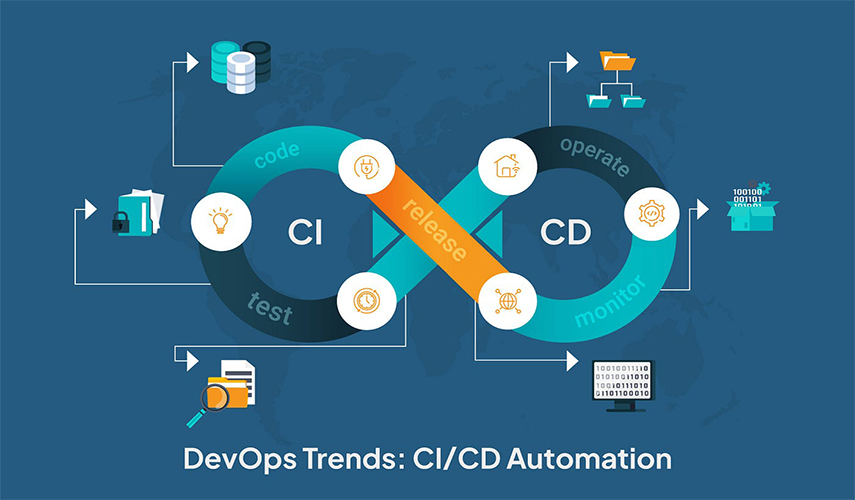
Integrate DevOps & CI/CD
Cloud platforms natively support DevOps and CI/CD (Continuous Integration/Continuous Deployment) by providing comprehensive, managed toolchains and the scalable, on-demand infrastructure necessary for automated, agile software development. This integration is key to accelerating the delivery of high-quality software and enabling a rapid, iterative development cycle.
How cloud platforms facilitate DevOps and CI/CD
1. Native CI/CD toolchains
Major cloud providers offer integrated, end-to-end services for building and managing CI/CD pipelines, eliminating the need to set up and maintain a complex toolchain from scratch.
- AWS: Provides a suite of integrated services, including AWS CodePipeline (orchestration), CodeCommit (Git repository), CodeBuild (build service), and CodeDeploy (deployment service).
- Microsoft Azure: Features Azure DevOps, a comprehensive platform that includes Azure Pipelines for CI/CD automation, Azure Repos for version control, and Azure Boards for project management.
- Google Cloud: Offers Google Cloud Build (CI/CD), Artifact Registry (container management), and Cloud Deploy (promotion of releases across environments).
2. Scalable, ephemeral environments
Cloud platforms enable the creation of temporary, production-like testing environments for each build, a capability that is difficult and expensive to replicate on-premises.
- Faster feedback: Developers can get immediate feedback on their code changes. If a build fails a test, the CI/CD pipeline immediately notifies developers, who can address the issue while the code is still fresh in their minds.
- Cost-efficiency: These environments are automatically provisioned and de-provisioned, meaning organizations only pay for resources when the tests are actually running, significantly reducing infrastructure costs.
3. Automated testing and quality gates
A cloud-based CI/CD pipeline integrates automated testing throughout the development lifecycle, ensuring consistent quality with every release.
- Types of automated tests: The pipeline can automatically run a variety of tests, including unit, integration, end-to-end, and performance tests, to validate code changes.
- Security testing: DevSecOps practices are supported by integrating automated security scans directly into the pipeline to check for vulnerabilities and ensure compliance early in the development cycle.
- Quality assurance: Code can be automatically promoted to the next stage of the pipeline only after it successfully passes all automated tests, ensuring a robust and reliable product.
4. Continuous deployment and reduced risk
Cloud platforms support automating the final stages of the pipeline, from delivery to production, with minimal human intervention.
- Smaller, frequent updates: CI/CD enables smaller and more frequent releases, which are less risky than large, infrequent ones. If an issue does arise, it is easier to identify and fix, and rollbacks are simpler to execute.
- Zero-downtime deployments: Advanced deployment strategies supported by the cloud, like blue/green or canary deployments, allow for new versions to be released without disrupting service to users.
- Automated rollbacks: In case of a deployment failure, the pipeline can be configured to automatically roll back to the previous, stable version, minimizing downtime.
5. Infrastructure as code (IaC)
Cloud providers enable the management of infrastructure with code, which is foundational to DevOps practices and CI/CD.
- Consistent environments: IaC tools like AWS CloudFormation, Azure Resource Manager templates, and Terraform define and provision infrastructure in a repeatable way. This ensures consistency between development, staging, and production environments and eliminates configuration drift.
- Version control: Infrastructure configurations can be stored in a version control system like Git, allowing them to be managed and tracked just like application code.
DevOps tools and the cloud
Cloud platforms offer a centralized platform that supports a variety of DevOps tools, whether they are native, open-source, or proprietary. Examples include:
- Build Automation: Jenkins, Gradle, Maven.
- Source Code Management: GitHub, GitLab, Bitbucket.
- Containerization: Docker, Kubernetes.
- Monitoring and Logging: Cloud-native tools like AWS CloudWatch, Azure Monitor, and Google Cloud Logging, as well as third-party solutions.
